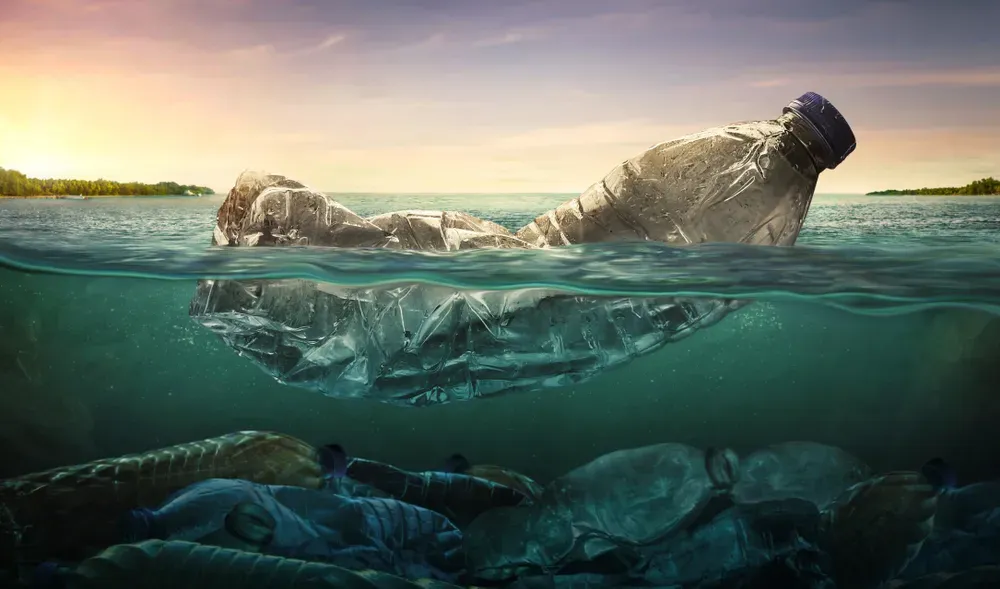How Plastics Can Be Removed From Our Rivers And Oceans

7 methods to reduce plastic pollution
Credit: This article is based on the scientific article “Plastic pollution solutions: emerging technologies to prevent and collect marine plastic pollution” by Emma Schmaltz and colleagues (Full citation and link available at the end of the article)
Plastic receives a lot of critique, because it often ends up in rivers and oceans. Maybe you have heard of the Great Pacific Garbage Patch, a huge area in the Pacific Ocean in which plastic is floating around due to ocean currents.
Plastics that end up in rivers and oceans can harm the environment and marine life. To prevent them from doing permanent harm, several techniques have been developed to remove plastics. These techniques can deal with both larger pieces, which are called macroplastics, and tiny pieces, which are called microplastics. This is how it works:
Large-scale booms
The first way to remove plastic is by using large-scale booms, which are large floating pipes. They capture trash by stopping floating rubbish. This method makes it possible to collect large amounts of plastic, without harming the underneath marine life.
For example, The Ocean Cleanup project uses large-scale booms to clean up trash in the Great Pacific Garbage Patch. This boom is C-shaped and floats on the ocean surface in the direction of the current. Floating trash gets trapped, is collected, and then transported to plants for processing.
River booms
The second way to remove plastic is by using river booms. River booms are similar to large-scale booms as they also stop trash. But they differ in that they are smaller and used in rivers, so they can stop garbage reaching the sea or ocean.
For example, The Litter Boom Project uses a large pipe that is attached to both sides of the river. The trash can easily be collected at the river side.
Another example is the Plastic Fischer Trash Boom. It consists of PVC pipes that make the steel grid below the surface float. The advantage of these grids is that plastics up to 60 cm deep (23.6 inches) can be captured.
Waterway litter traps
The third way to remove plastic is by using litter traps. Litter traps also use booms, but are not only barriers, they also guide waste to a litter trap. This makes taking the plastic out of the river easier.
For example, the Bandalong Litter Trap was designed to capture waste in flowing streams.
Robots
The fourth way to remove plastic is by using robots. Robots combined with artificial intelligence can be used to pick up floating plastics. They work very well in water without current. As they are also able to detect fish, they can make sure to only capture plastic.
For example, FRED is a “Floating Robot for Eliminating Debris”. It has two solar cells that provide power to the collecting vents, which capture floating (plastic-)waste.
Another example is WasteShark. It has an open “mouth” that vacuums micro-plastics, biomass, and any other floating waste in rivers and canals.
Boats
The fifth way to remove plastic is by using boats. Boats use different tools such as nets to collect all kinds of plastic trash. The advantage is that they can work on a larger scale than for example robots.
For example, ERVIS is a saucer-like ship, which captures waste of any size. It even analyzes the waste and separates it into five categories, based on the size and type of waste. This makes it easy to dispose the collected waste correctly.
Wheels
The sixth way to remove plastic is by using wheels. Wheels are put in suitable places, so they can capture waste and transport it with a conveyor belt in a container. The advantage is that they can work day and night.
For example, Mr. Trash Wheel is stationed in places where a lot of floating plastic passes. Large water wheels are turned by the flowing water and move the conveyor belts. The captured trash gets trapped in the steps of the conveyor belt. At the end of the belt is a container. When the container is full, the waste is disposed correctly.
Beach cleaners
The seventh way to remove plastic is by using beach cleaners. This method is helpful to remove plastic that ended up on beaches. The advantage is that it prevents plastics being carried back into the ocean and cleans the beach.
For example, the Barber Sand Man is like a hoover that sifts the sand.
Another example is the Microplastic Buoyancy Filtration Device, which uses water to filter out the tiny plastic from the sand. The lightest pieces of plastic that float are transported by the water into a container.
Other methods
Other methods have been invented as well. They need to be researched further to make sure they can be used on a large scale as well.
For example, Fionn Ferreira invented a technique to remove micro-plastics by using a magnet. To be able to use a magnet, a magnetic powder is mixed with oil, which binds to the microplastics.
Conclusion
So, plastic can be removed from our rivers and oceans by capturing it using large-scale booms, river booms, waterway traps, robots, boats, wheels, and beach cleaners. Further methods have been invented, but they need to be researched further before they can be applied on a large scale.
Written by Dr. Erlijn van Genuchten
